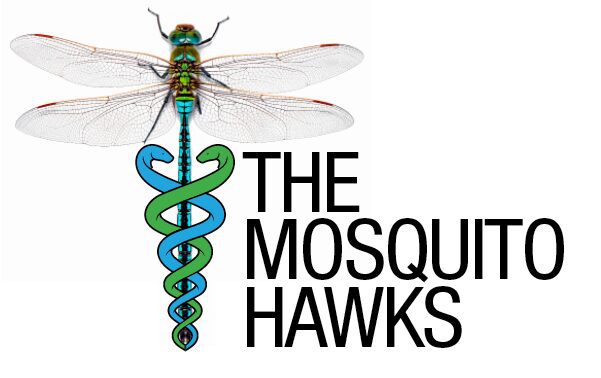Why are YOU always the first one to get bit?
Mosquitoes are attracted to certain chemicals that are present in higher concentrations in some people’s skin. These chemicals include lactic acid, uric acid, and ammonia. Mosquitoes are also attracted to people who are producing more skin heat, as well as those who are exhaling more carbon dioxide. People who are sweating or have a higher body mass index (BMI) may also be more attractive to mosquitoes. Additionally, certain blood types may be more attractive to mosquitoes.
How ticks and mosquitoes transmit diseases
Ticks transmit diseases to humans through their bite. They feed on the blood of humans and animals, and during the process, they can transmit harmful pathogens and bacteria from their gut into the host’s bloodstream. Some of the diseases that ticks can transmit include Lyme disease, Rocky Mountain spotted fever, and tularemia. It’s important to take precautions when spending time in areas where ticks are common, such as removing any ticks that are found on the skin as soon as possible and using insect repellents.
Mosquitoes transmit diseases to humans through their bite. When a mosquito bites a person, it injects saliva into the person’s skin, which can contain viruses or parasites. These pathogens can then enter the person’s bloodstream and cause an infection. Some of the diseases that mosquitoes can transmit to humans include malaria, dengue fever, West Nile virus, and Zika virus. To prevent mosquito-borne illnesses, it’s important to take precautions such as using insect repellents, wearing long-sleeved shirts and pants, and using screens on windows and doors to keep mosquitoes out of your home.
Why are YOU always the first one to get bit?
Mosquitoes are attracted to certain chemicals that are present in higher concentrations in some people’s skin. These chemicals include lactic acid, uric acid, and ammonia. Mosquitoes are also attracted to people who are producing more skin heat, as well as those who are exhaling more carbon dioxide. People who are sweating or have a higher body mass index (BMI) may also be more attractive to mosquitoes. Additionally, certain blood types may be more attractive to mosquitoes.
How fast do mosquito populations regenerate after an organic spray treatment in a residential yard?
The rate at which mosquito populations regenerate after an organic spray treatment in a residential yard can vary depending on several factors such as the weather, the type of treatment used, and the mosquito species present.
In general, if an organic spray treatment is effective in reducing or eliminating adult mosquitoes, it can take several days to a few weeks for the population to rebuild. However, if the treatment is targeting mosquito larvae, which are the immature stage of the mosquito, it can take longer for the population to regenerate.
Bacillus thuringiensis israelensis (BTI) is a naturally-occurring bacteria that is toxic to mosquito larvae but harmless to other organisms. It’s usually applied as a granule or a briquet to standing water or as a liquid to the foliage of plants. It can be effective in controlling mosquito larvae, but it may need to be reapplied after heavy rain.
It’s important to note that organic mosquito control methods can be less effective in areas where mosquitoes are prevalent, and in some cases, it may not be able to completely eliminate the population. Additionally, even if the population is reduced, new mosquitoes can fly in from neighboring areas, so it’s important to continue to monitor the population and reapply treatments as needed.
KNOW THE ENEMY – Mosquitoes
- Mosquitoes are small, flying insects that belong to the family Culicidae.
- Only female mosquitoes bite humans and animals to obtain the protein in blood which is necessary for the development of their eggs.
- Mosquitoes are found on every continent except Antarctica.
- Mosquitoes can transmit diseases such as malaria, dengue fever, West Nile virus, and Zika virus to humans.
- Mosquitoes are attracted to carbon dioxide, body heat, and lactic acid, which is why they are more likely to bite certain people.
- Mosquitoes have a complex life cycle that includes four stages: egg, larva, pupa, and adult.
- Mosquitoes are poor fliers and can only fly short distances, which is why they are often found near standing water where they lay their eggs.
- Mosquitoes are most active at dawn and dusk, but some species are also active during the day.
- Mosquitoes have specialized antennae that help them locate hosts.
- Mosquitoes can be controlled through the use of insecticides, mosquito nets, and by eliminating standing water where mosquitoes breed.
KNOW THE ENEMY – Ticks
- Ticks are small, arachnid creatures that belong to the family Ixodidae.
- Ticks are found in many parts of the world and are most common in wooded, grassy, or brushy areas.
- Ticks are ectoparasites, which means they live on the outside of the host’s body and feed on the host’s blood.
- Ticks can transmit diseases such as Lyme disease, Rocky Mountain spotted fever, and tularemia to humans and animals.
- Ticks have a complex life cycle that includes three stages: larva, nymph, and adult.
- Ticks have specialized mouthparts that allow them to attach to a host’s skin and feed on its blood.
- Ticks are most active during the warmer months, but some species can be active year-round.
- Ticks can be found on both mammals and birds, and will often wait on tall grasses, brush or tree branches to attach to a passing host.
- Ticks can be controlled through the use of insecticides, tick repellents, and by removing them from the skin as soon as possible.
- Ticks are considered vectors, which means they can transmit diseases from one host to another.
